

Ever hear of the importance of cross training for runners? Whether you are a beginner or an experienced marathoner, you can benefit from cross training. Many runners find yoga an exceptional way to relax and destress after a tough workout. And, since yoga balances your weaker muscles with stronger ones - you’ll help reduce your risk of injury.
What’s more, yoga can also serve as a valuable outlet and give you a much-needed break from running day in and day out. This is especially important for those long distance vents like marathons or ultra marathons. Even if you are the most hard-core running enthusiast, you are likely to eventually burn out if you're running day after day.
Elite runner, Stephanie Garcia, uses yoga as a game-changing tool to supercharge her runs. “I’ve had runs where I might be feeling totally crappy and I try and just tap back into my breath, which is a huge thing they talk about in yoga,” she says. “All of a sudden, the run flies by and I survived it, feeling a lot better than when I started.”
Let’s have a look at some of the best yoga moves to improve your running performance.
1. Downward Facing Dog
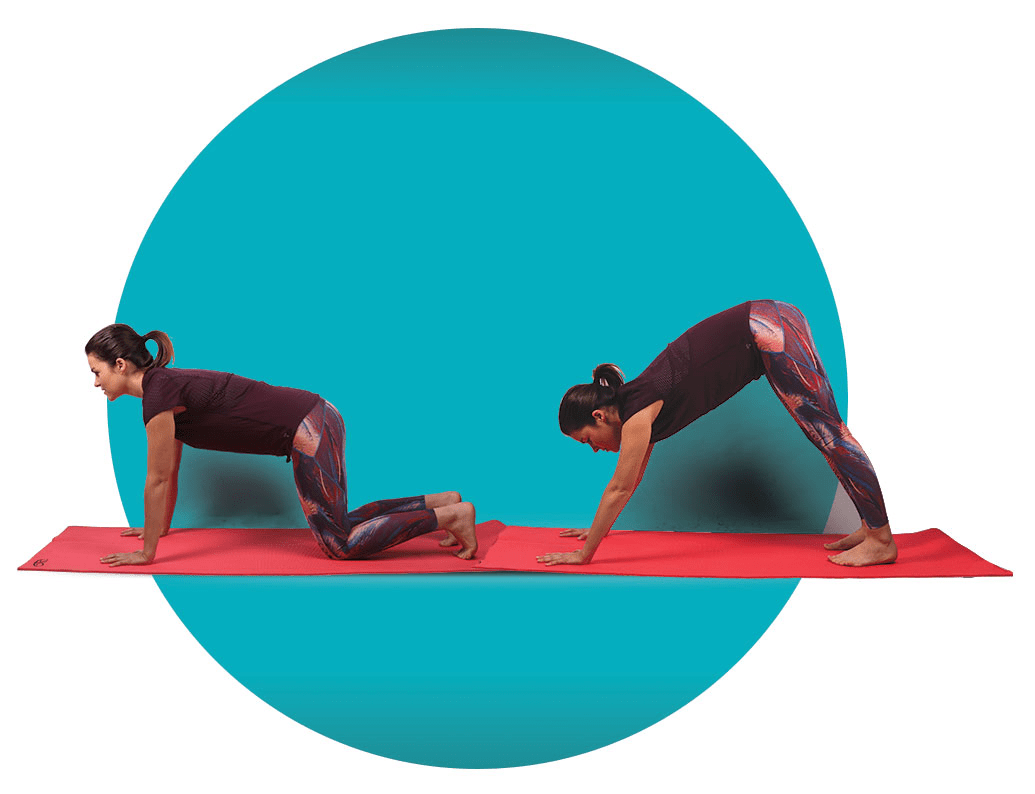
Strengthens the upper body, arms, shoulders, abdominals and legs.
Stretches the spine, ankles, calves and hamstrings.
Starting on all fours, with your hips above your knees and your shoulders above your wrist, tuck your toes under. Then, on an exhalation engage your lower abs drawing the navel back. Keep your hands slightly in front of your shoulders, with your middle finger pointing forward and fingers spread. Press through your hands and slowly lift your hips back and up into an upside down “V”. Remember to keep your chest open and collar bones spread. Maintaining this position, start alternating bending and straightening your legs, eventually bringing your heels towards the floor. Stay for 5 breaths.
2. Low Lunge
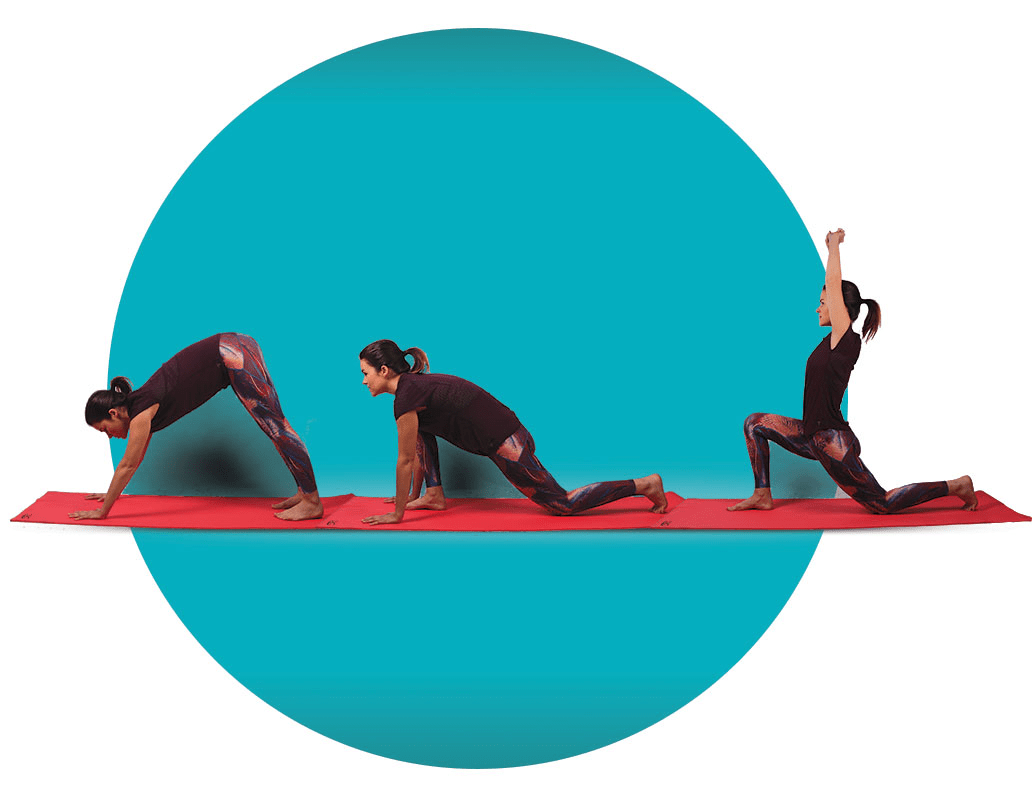
Strengthens the back, legs and shoulders.
Stretches the hips, quadriceps and feet.
Starting in downward facing dog, exhale and step your right foot forwards, between your hands. Lower your left knee to the floor while sliding your foot back until you feel a stretch in your left hip and quads. Remember to keep the hips low and level with each other. As you inhale, engage your lower abs and lift your chest up towards the ceiling, and lifting your arms up next to your ears. Look straight ahead of you, or slightly up as you breathe for 5 breaths before switching to the other side.
3. Reclining Hand to Big Toe
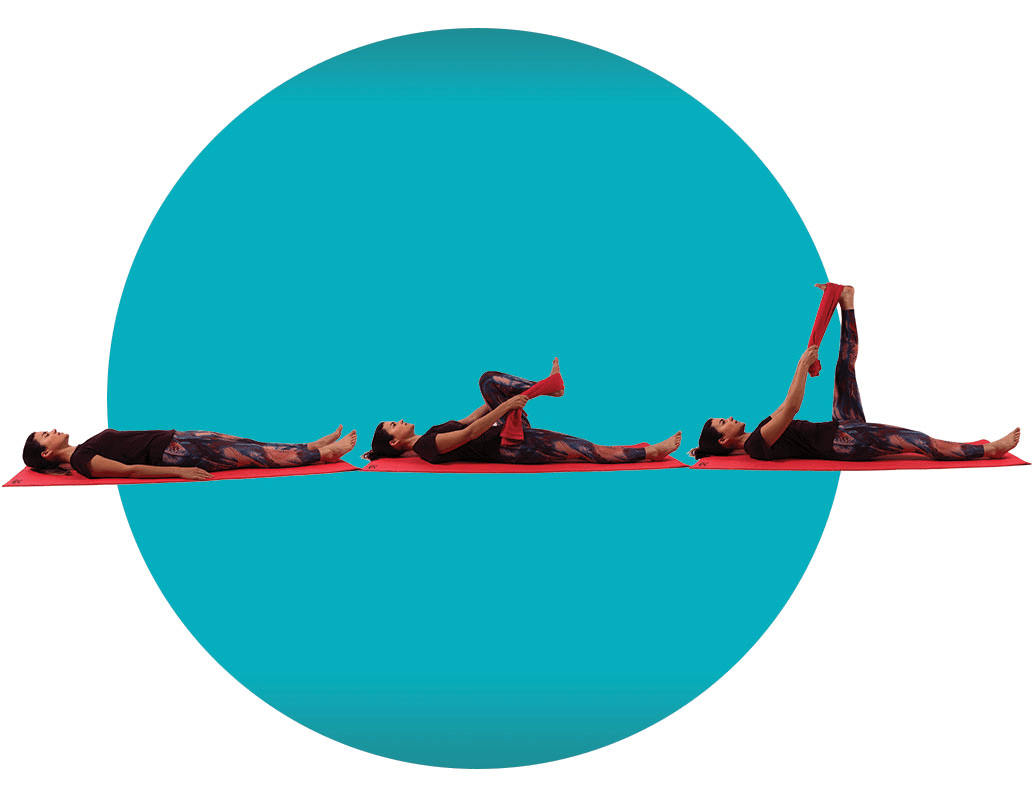
Strengthens the arms and legs.
Stretches the hamstrings.
Lying on the floor with your legs extended, exhale and bend the left knee - drawing your thigh into your torso. Loop a yoga strap or towel around your foot, holding the ends of the strap in both hands. Slowly lift your left leg, trying to straighten it as much as you can. Walk your hands up the strap until your elbows are fully extended. Broaden your shoulder blades across your back. As you feel your hamstring loosening, try to pull it further back with the yoga strap, however, be careful not to strain - you should only feel a gentle stretch in your hamstring. Hold the position for 5 breaths before switching legs.
4. Pigeon Pose
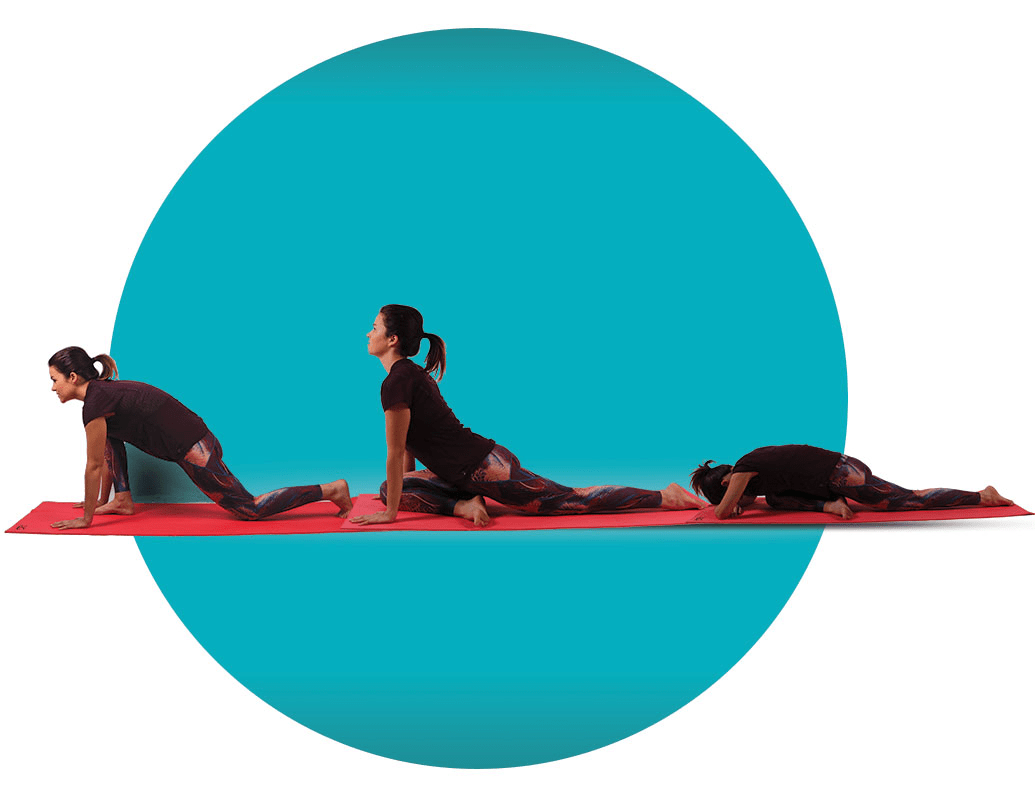
Strengthens core
Stretches hip flexors and glutes.
Starting on all fours, or from the low lunge, bring your right knee towards your right wrist. Your knee should be bent, and your ankle should be somewhere in front of your left hip. Slide your left leg straight back - the back of your knee should be pointing toward the ceiling. Use your core to keep your hips level. On your inhalation, come onto your fingertips, lengthen your spine and draw your naval in and open your chest. On your exhalation, walk your hands forward and lower your body to the floor. Rest your forearms and forehead on the mat. Breathe deeply for 5 breaths, and on every exhalation, try to release tension in your right hip. Switch sides.
5. Toes Pose

Strengthens the ankles and feet.
Stretches the shins and foot arches.
Sit on your heels with your feet together, then lean forward and tuck your toes underneath your bottom. Your weight should now be on the balls of your feet. If you experience any pain in your knees, you may place a soft folded blanket underneath them. Breathe deeply for 5 breaths, then point your toes and place your hands on the mat behind you. Lean back as your try and lift your knees off the matt. You should feel a gentle stretch in your shins and foot arches. To come out of the pose, bring your weight forward and slowly release your toes.
6. Reclined Twist

Strengthens the core.
Stretches the torso and glutes
Lie on your back with your arms in a “T” shape. Bend your knees, and move your hips to the left as you twist your knees over to the left of your body. Keep your legs intertwined and arms extended at your sides. Turn your head to the left and breathe deeply for 5 breaths before switching sides.
7. Legs Up the Wall
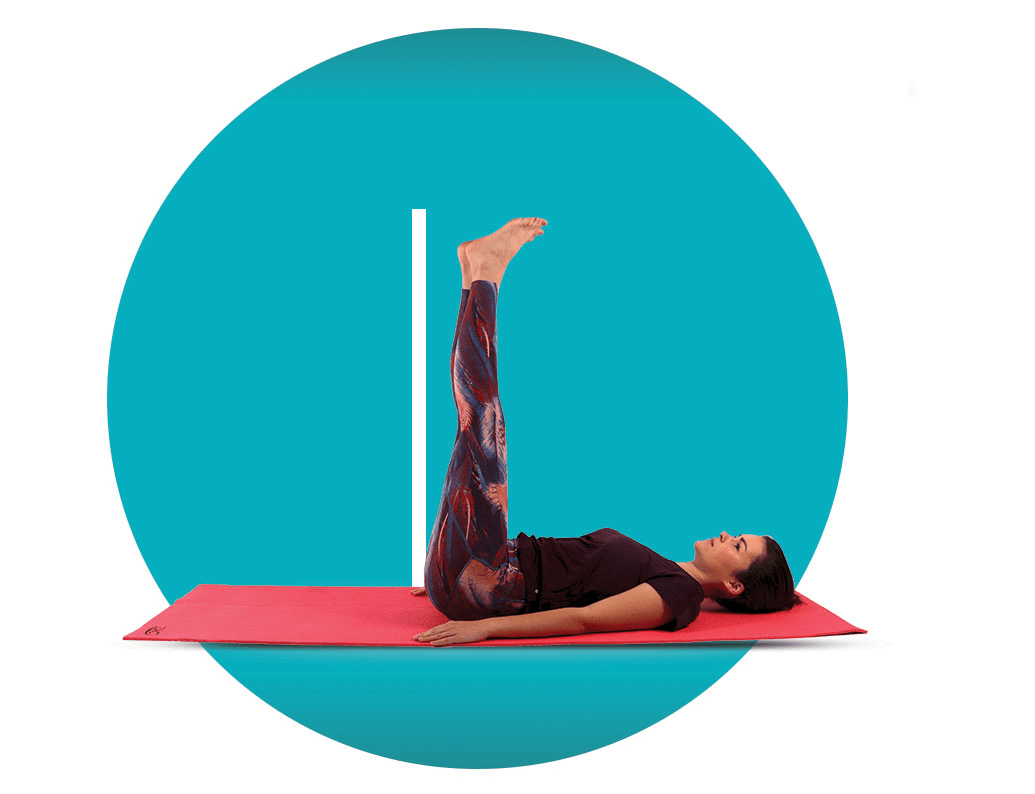
Relieves pressure in the legs, feet and back and improves circulation.
Stretches the hamstrings and glutes.
Lying beside a wall, with your hips as close as possible to the base of the wall - swing your legs up the wall. Shift your body so that your body is perpendicular to the wall, with your legs straight up against it. Relax in this position, breathing deeply for 10 breaths or even longer. You could even place a pillow under your lower back to make it more of an inverted pose.
Final Thoughts
Yoga can be used as an incredibly powerful cross-training tool to help runners balance strength, and increase range of motion and synchronize breathing. Yoga instructor and marathoner, Rebecca Pacheco, recommends doing these yoga moves after a run or on a rest day. It’s also important to take it slow in the beginning when your muscles are tight from running. Always ease into every position, and never push to the point of pain. Over time, you will notice improvement in both your yoga practice and running performance.

